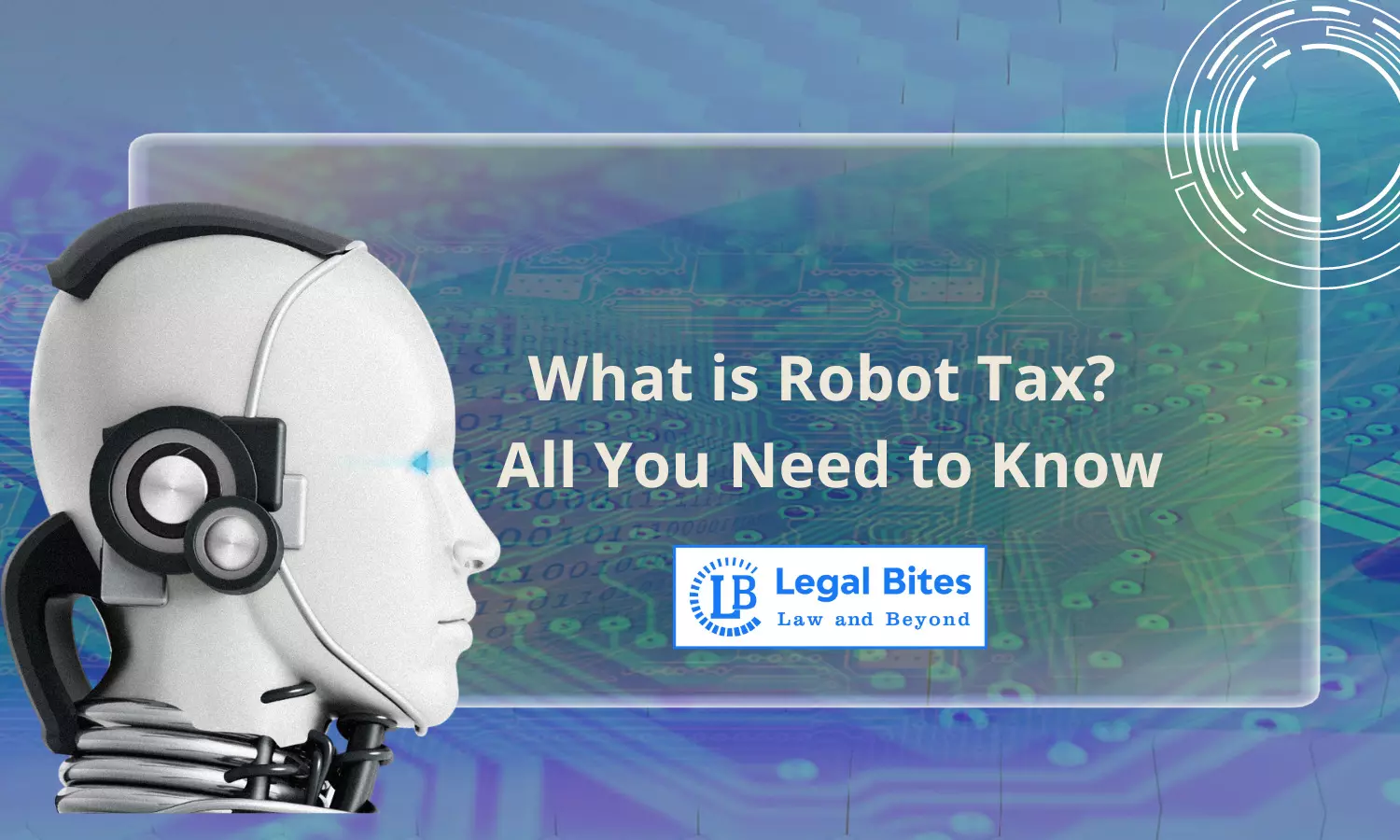What is Robot Tax? All You Need to Know
This article covers the Robot tax and its potential implications for employment.

A Robot Tax is a proposed levy on companies that use robots or automation to replace human workers. The idea behind the tax is to address potential economic and social impacts caused by widespread automation, such as job displacement and reduced tax revenue from income taxes
Introduction
In our rapidly evolving world, technology and artificial intelligence (AI) have become crucial parts of our daily lives, advancing at an unprecedented rate. These rapid advancements raise concerns about their impact on society, particularly regarding employment and the job market.
When robots replace human workers and human jobs, they are destroying the income of individuals, which consequently reduces the government revenue from income, taxes of individuals and companies. To address such issues, there is a call for imposing an attack on robots or the Entity that deploys them.
It is a form of taxation which aimed at addressing the economic and social impact of automation and robotics in the job market. The concept behind such tax is to mitigate the negative effects by taxing companies that use robots and then using the revenue that is generated from such tax to support social programs.
History: Industrial Revolution
The concept of automation and its impact on unemployment is not new. The Industrial Revolution, which began in the late 18th century saw the transformation of industries such as textile, agriculture, and manufacturing. This has led to significant changes and shifts in the labour market but also created new jobs which require technology, and technologically advanced minds.
Currently, the world is witnessing the development of robotics and artificial intelligence. These technologies have the potential to automate not only manual tasks but also raise the stakes for future employment. The only difference is the speed in the scale at which these changes are occurring.
Economic, Social and Financial Benefits
The primary reason behind the robot tax is to address the economic disruption, which is caused by automation. As robots have taken over more jobs, particularly in the manufacturing sector, there is increased fear of unemployment. A robot tax can provide economic support for individuals displaced by automation and ensure that the benefits of technological advancement are shared for the betterment of society. The revenue generated from such a tax can fund retraining programs, social welfare initiatives, and other support for affected workers.
Support for Displaced Workers: One of the arguments favouring the Robot tax is that it provides safety for workers who lose their jobs due to such automation. The tax collected via such automation can help fund unemployment benefits and other social services that can assist displaced workers.
Maintaining Consumer Demand: Providing financial support to workers who lost their jobs due to automation can also help maintain consumer demand, which plays a very crucial role in economic stability. The economy of the country would see large unemployment which could reduce consumer spending resulting in a negative impact on the economy as a whole
Balanced Automation: Such tax on companies can also help policymakers create incentives for businesses to balance the use of human labour and automation. This would not only help to prevent the wholesale replacement of Human workers but would also encourage the businesses.
Global Perspective
South Korea: South Korea became the first country to implement a robot tax by passing a law in 2017. This law provides tax deductions for companies investing in robotics while also imposing higher taxes on the firms that replace human workers with robots. This approach has primarily aimed to balance the promotion of technological innovation.
San Francisco, United States of America: San Francisco has considered implementing a robot to address the displacement of workers by automation. The proposed tax would make company that uses robots, pay a high fee.
Such an example highlights the diverse approaches which are taken by different regions to address the challenges that have arisen due to automation. Each approach reflects the unique economic, social, and political contexts of the respective areas, offering valuable insights for policymakers considering similar measures.
Challenges and Problems
A Robot Tax can make it more expensive for companies to invest in new technologies. This could slow down automation, which can improve productivity and economic growth. Critics have also argued that tax robots might also slow down the job creation in the sector for automation and human labour work simultaneously.
This isn’t a flawless governmental policy. The implementation of this tax is as challenging as other policies in certain places. Due to methodological record-keeping processes and the informal labour status of the gig economy, applying the tax becomes complex. It's particularly difficult in gig-based jobs where workers aren’t formally classified as employees. While some gig workers may receive unemployment benefits through unions, taxing companies becomes more complex and challenging compared to traditional formal sector jobs. Even in the freelancing industry, applying such a tax is extremely difficult due to the lack of specific entities on which the tax can be levied. Entrepreneurship is another sector that may evade such taxes.
These challenges do not negate the usefulness of a ‘ROBOT TAX’. They highlight exceptions that are difficult to address in certain places like India. Taxing sectors such as agriculture is extremely challenging; India's agricultural industry currently enjoys tax exemptions and has significant potential for the use of robots. However, changes in government policy may make taxing this sector in India more feasible.
Conclusion
The debate around taxing robots reflects a larger concern regarding the future of work and the role of automation in society. While implementing such a tax can provide essential assistance to displaced workers and also help them maintain economic stability, encountering, significant challenges and criticism. It also faces challenges such as defining what qualifies as a robot, the potential impact on innovation, and other complexities that raise concerns
Alternative solutions such as UBI offer different approaches to addressing the economic and social impact of automation, each having its advantages and disadvantages. With the rise of automation, there is continuous shaping of the market policymakers will need to consider a variety of strategies to ensure that such benefits of technological progress are widely shared and that the transition to an increasingly automated economy is as smooth and as fair as possible.
References
[1] Navigating the future of work: A case for a robot tax in the age of AI, Available Here
[2] Robot Tax, Available Here

